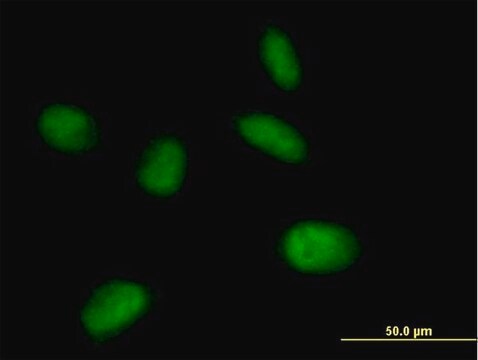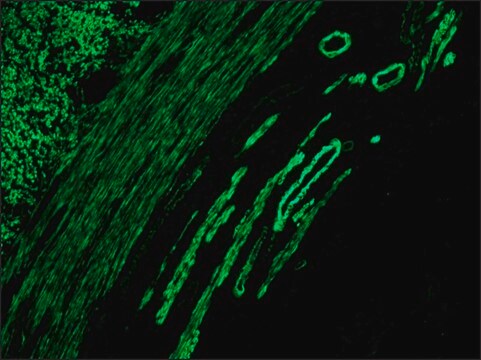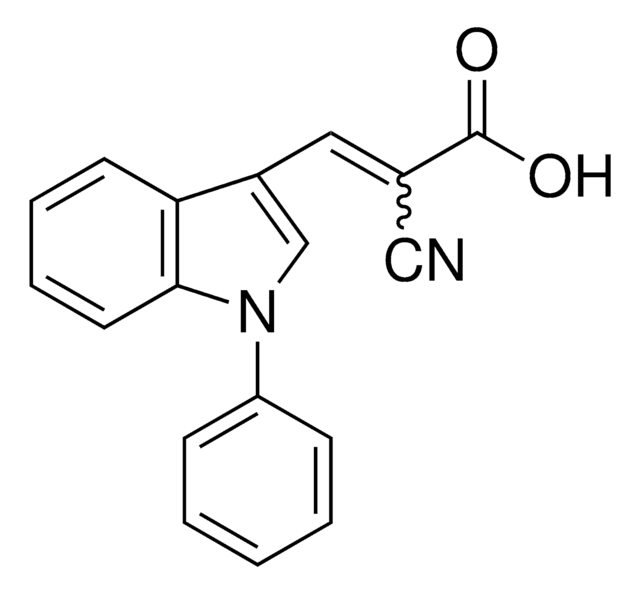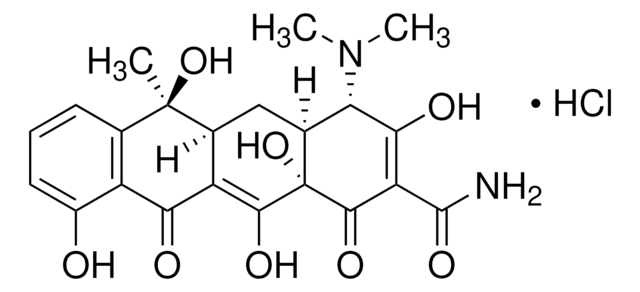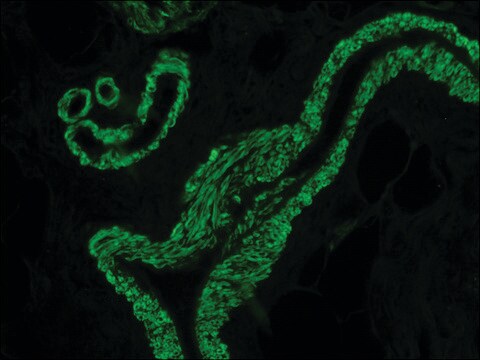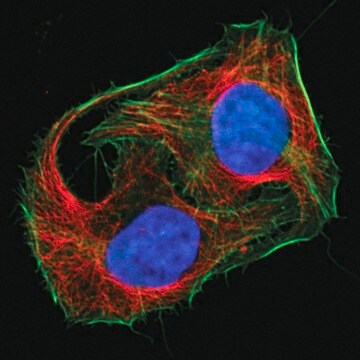F9006
Anti-Mouse IgG (whole molecule)–FITC antibody produced in goat
IgG fraction of antiserum, buffered aqueous solution
Synonym(s):
Goat Anti-Mouse IgG (whole molecule)–Fluorescein isothiocyanate
Sign Into View Organizational & Contract Pricing
All Photos(1)
About This Item
Recommended Products
biological source
goat
conjugate
FITC conjugate
antibody form
IgG fraction of antiserum
antibody product type
secondary antibodies
clone
polyclonal
form
buffered aqueous solution
technique(s)
direct immunofluorescence: 1:64
storage temp.
2-8°C
target post-translational modification
unmodified
Looking for similar products? Visit Product Comparison Guide
General description
IgG antibody consists of four subclasses : IgG1, IgG2, IgG3 and IgG4. The IgG structure possesses four polypeptide chains containing two identical γ heavy (H) chains and two identical κ or λ light (L) chains of 50 kDa and 25 kDa respectively. The chains are interlinked with a disulfide bond.
IgG antibody subtype is the most abundant serum immunoglobulins of the immune system. It is secreted by B cells and is found in blood and extracellular fluids and provides protection from infections caused by bacteria, fungi and viruses. Maternal IgG is transferred to fetus through the placenta that is vital for immune defence of the neonate against infections
Anti-Mouse IgG (whole molecule)-FITC antibody is specific for mouse IgG. Goat anti-mouse IgG is conjugated to Fluorescein Isothiocyanate (FITC), Isomer I. Following conjugation, unbound FITC is removed by extensive dialysis.
Anti-Mouse IgG (whole molecule)-FITC antibody is specific for mouse IgG. Goat anti-mouse IgG is conjugated to Fluorescein Isothiocyanate (FITC), Isomer I. Following conjugation, unbound FITC is removed by extensive dialysis.
Immunogen
Purified mouse IgG
Application
Anti-Mouse IgG (whole molecule)−FITC antibody produced in goat has been used in flow cytometry.
The antibody may be used for immunofluorescent staining of mouse spleen cells at a working dilution of 1:64. A working antibody dilution of 1:40 was used to stain the conidia of Botrytis cinerea for immunofluorescence. The antibody was also used for immunofluorescence of primary luteal cell cultures incubated with primary antibody against CD45 and rhizoids of Chara globularis incubated with anti-human spectrin antibody.
Biochem/physiol Actions
IgG (immunoglobulin G) antibody has its function similar to IgM antibody in complement system activation. IgG participates in hypersensitivity type II and type III. It helps in opsonization, complement fixation and antibody-dependent cell-mediated cytotoxicity.
Physical form
Solution in 0.01 M phosphate buffered saline, pH 7.4, containing 15 mM sodium azide.
Disclaimer
Unless otherwise stated in our catalog or other company documentation accompanying the product(s), our products are intended for research use only and are not to be used for any other purpose, which includes but is not limited to, unauthorized commercial uses, in vitro diagnostic uses, ex vivo or in vivo therapeutic uses or any type of consumption or application to humans or animals.
Not finding the right product?
Try our Product Selector Tool.
Storage Class Code
10 - Combustible liquids
WGK
nwg
Flash Point(F)
Not applicable
Flash Point(C)
Not applicable
Choose from one of the most recent versions:
Already Own This Product?
Find documentation for the products that you have recently purchased in the Document Library.
Customers Also Viewed
N T Brodin et al.
The journal of histochemistry and cytochemistry : official journal of the Histochemistry Society, 37(7), 1013-1024 (1989-07-01)
Rat monoclonal antibodies (MAb) directed to mouse Ig heavy and light chain determinants were produced. A rat anti-mouse light chain MAb (RAMOL-1) which bound to all (24/24) mouse Ig of the kappa light chain type and with varying strength to
Designing Antibodies, 216-216 (2012)
Specific IgG for cat allergens in patients with allergic conjunctivitis
The Laboratory Rat, 35(4), 575-586 (2005)
Development of a monoclonal antibody-based immunodetection assay for Botrytis cinerea
Bossi R and Dewey FM
Plant Pathology, 41, 472-482 (1992)
Discoidin domain receptors promote alpha1beta1-and alpha2beta1-integrin mediated cell adhesion to collagen by enhancing integrin activation
Xu H, et al.
PLoS ONE, 7(12), e52209-e52209 (2012)
Our team of scientists has experience in all areas of research including Life Science, Material Science, Chemical Synthesis, Chromatography, Analytical and many others.
Contact Technical Service

